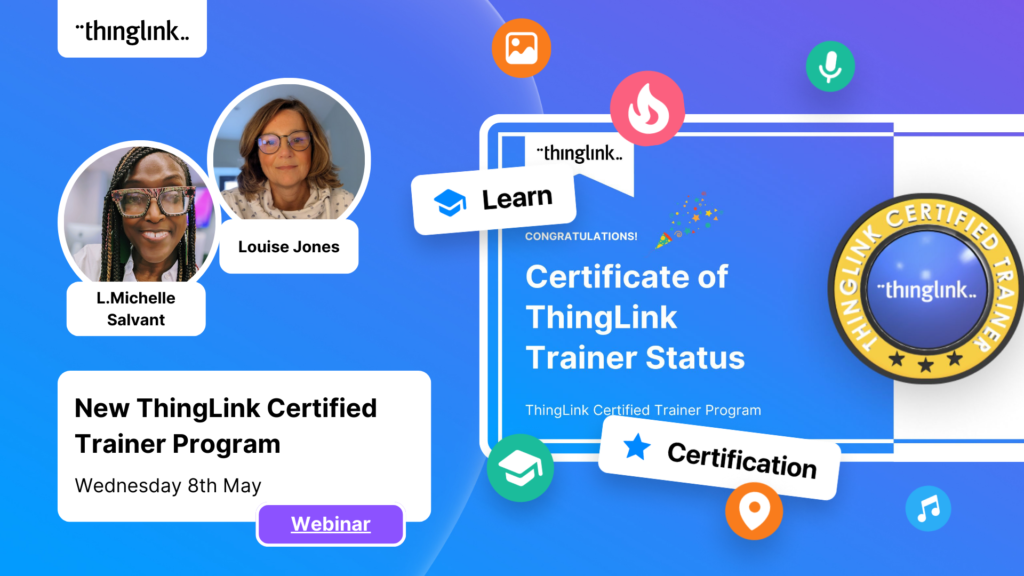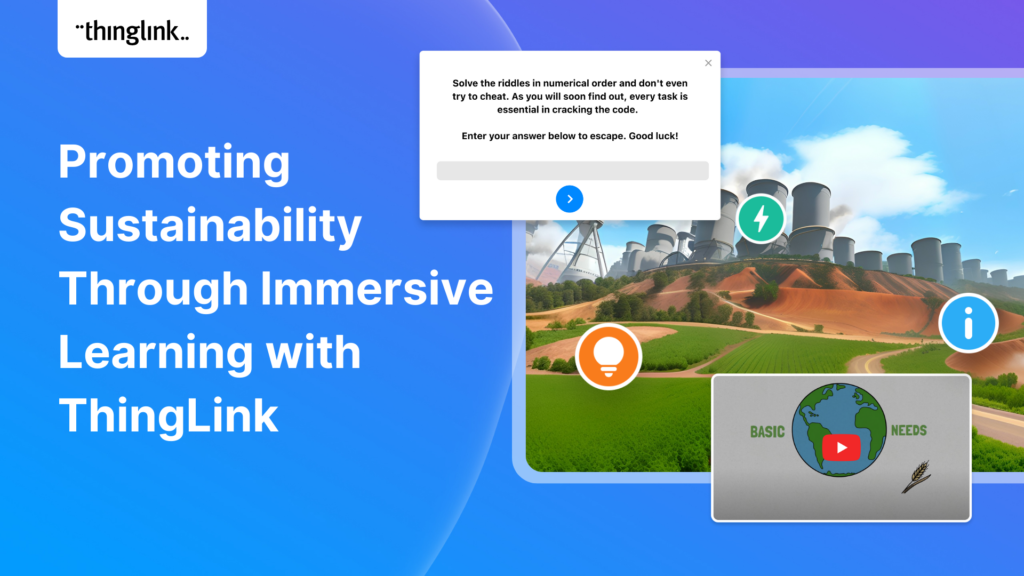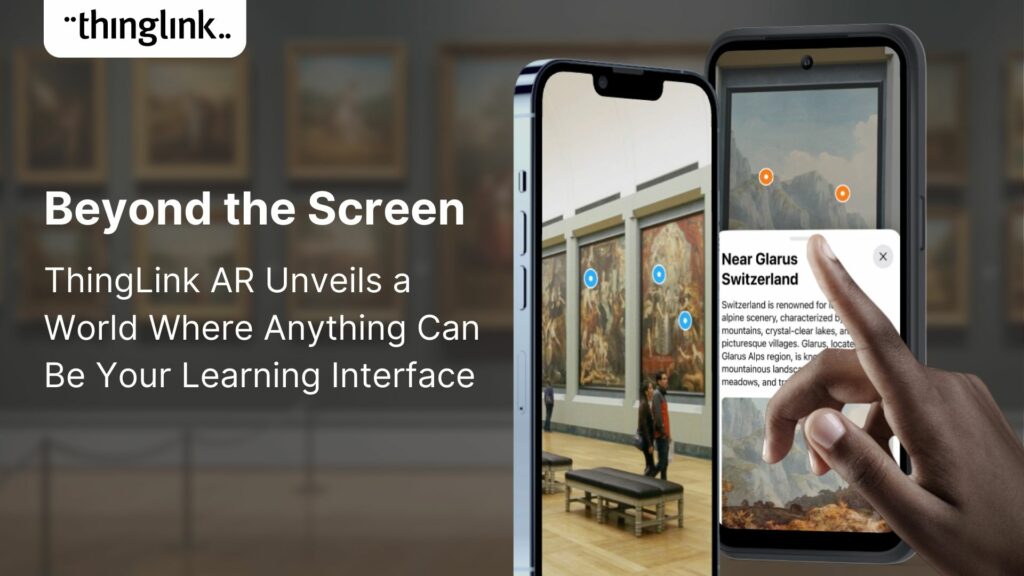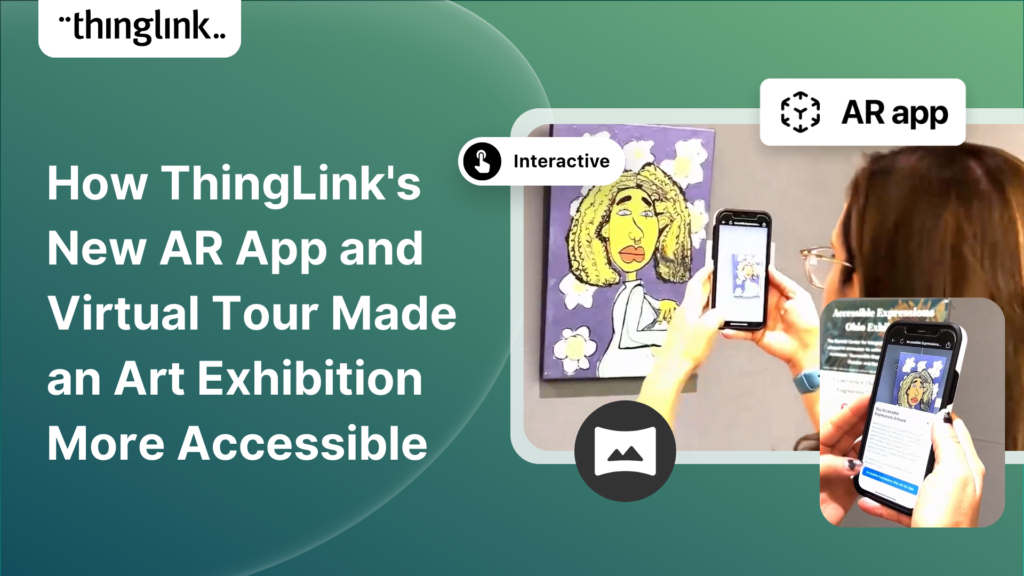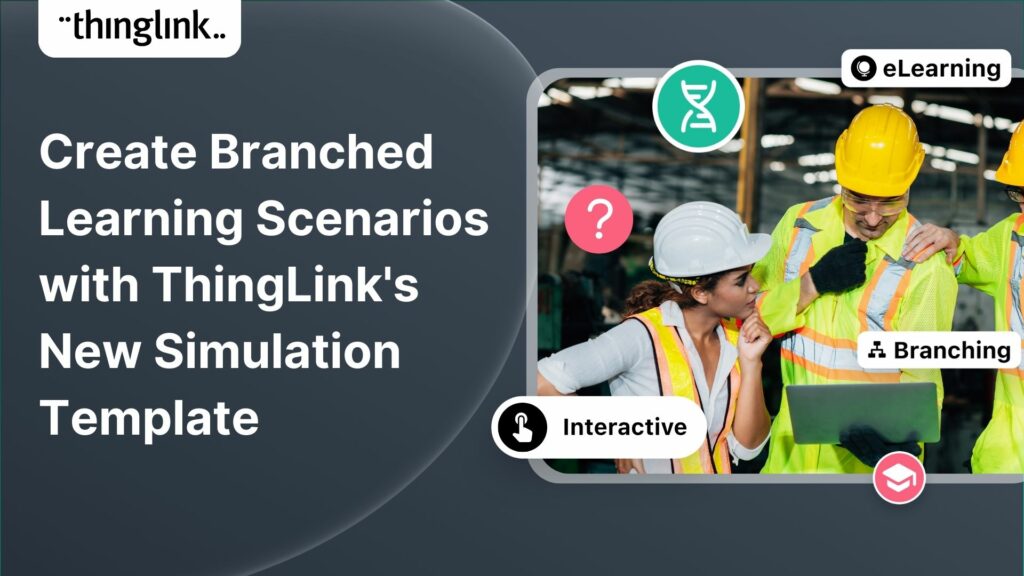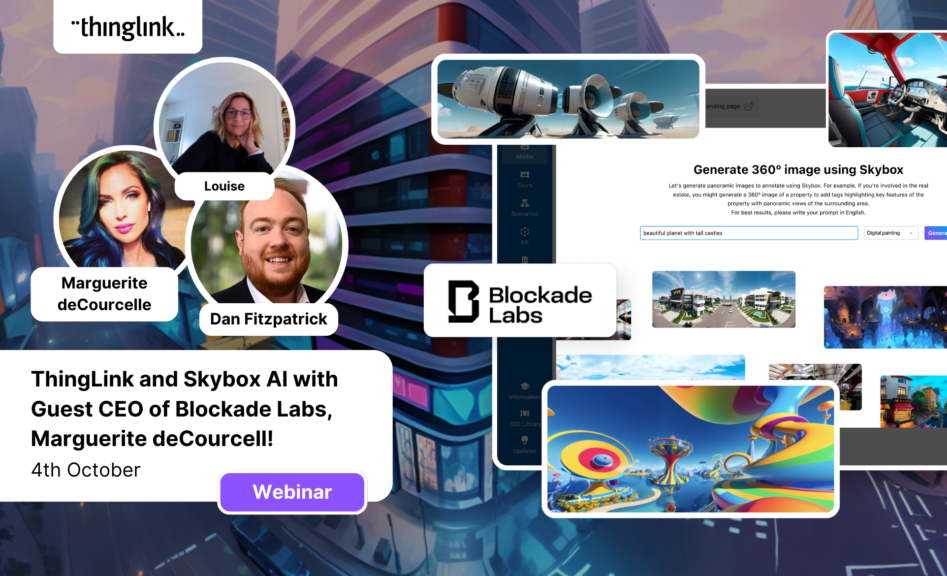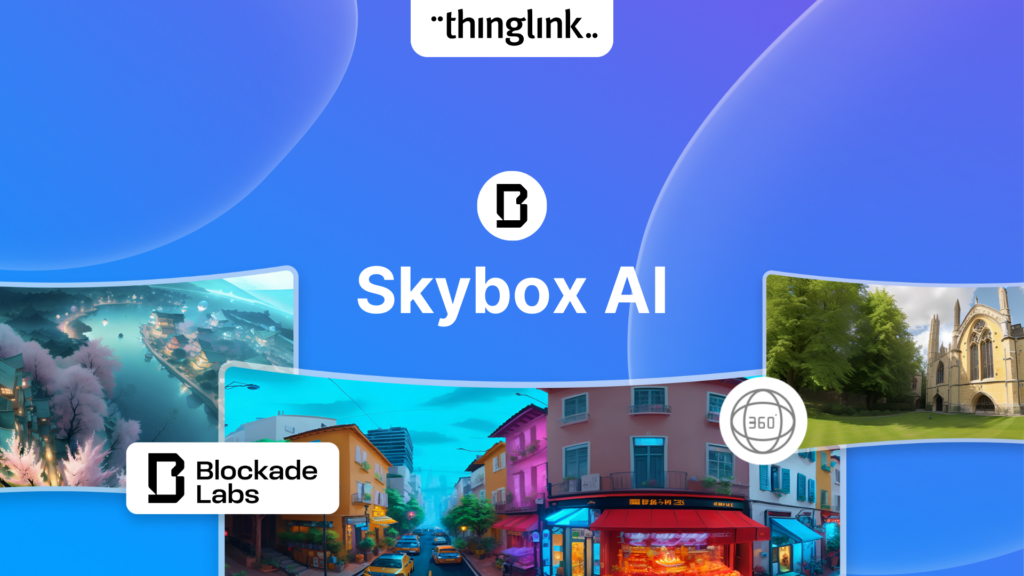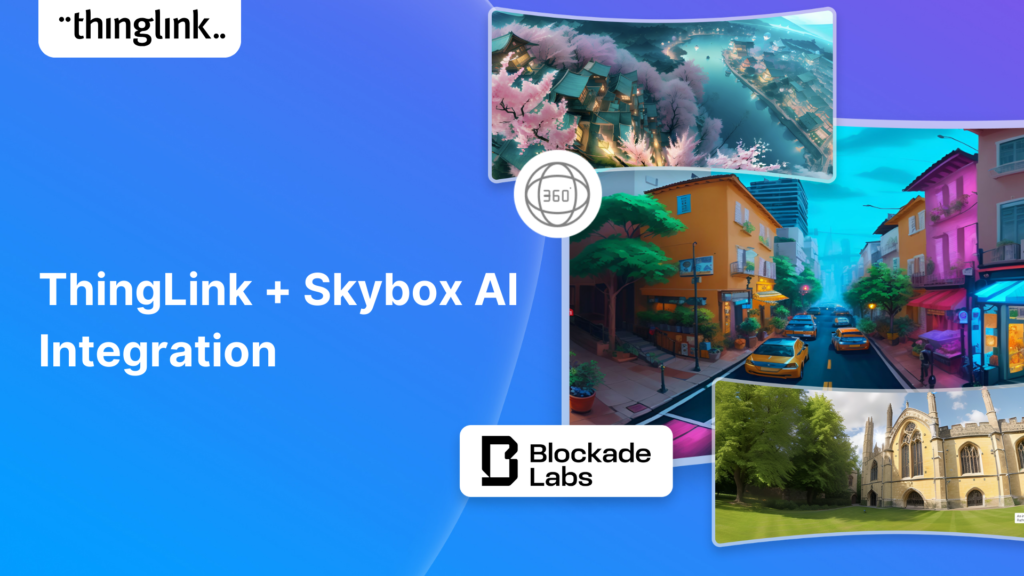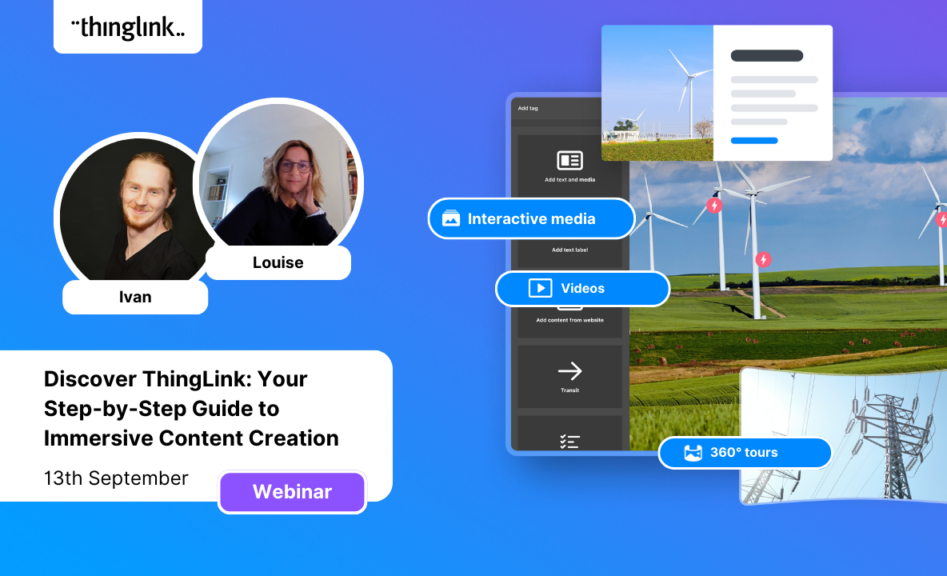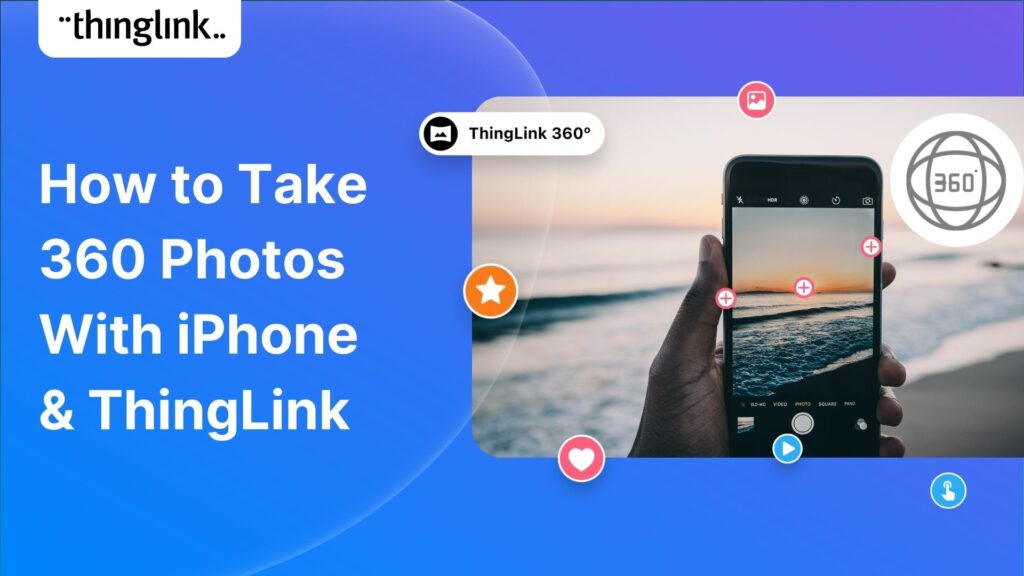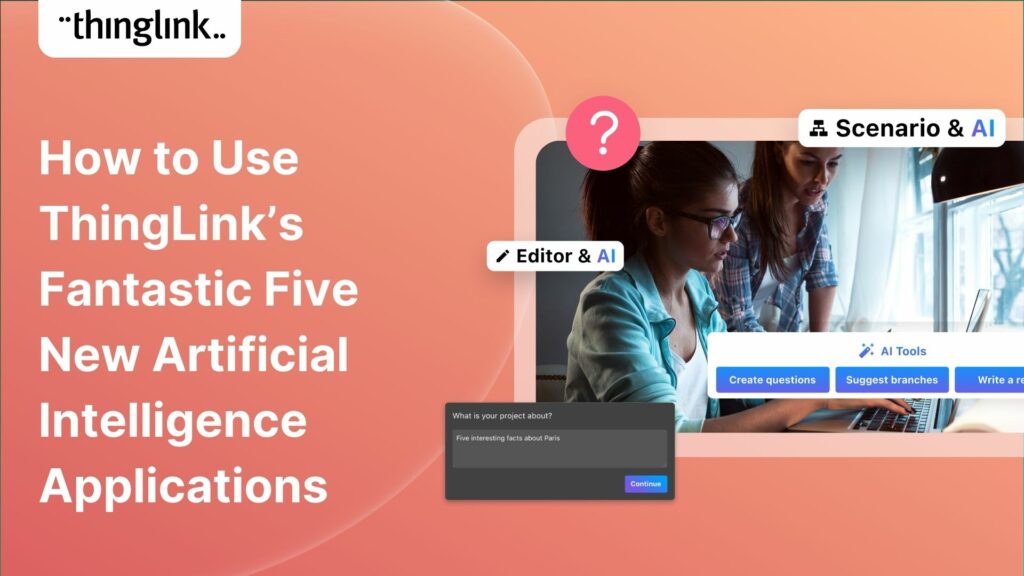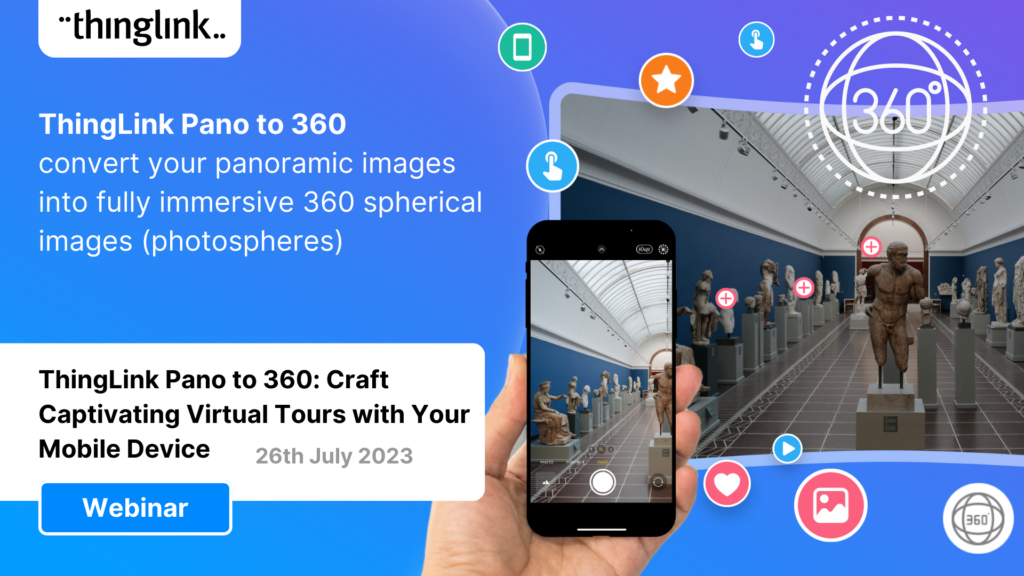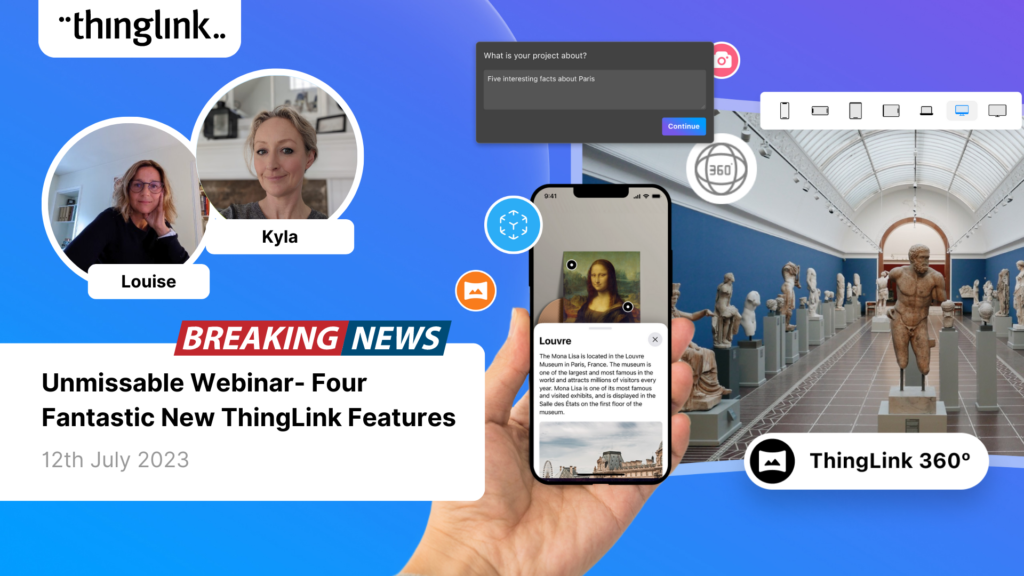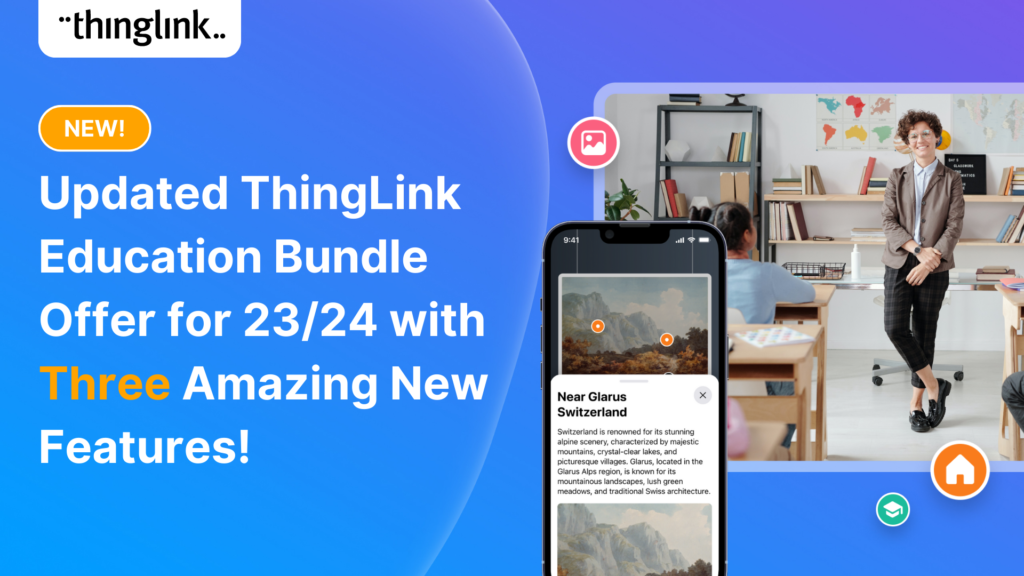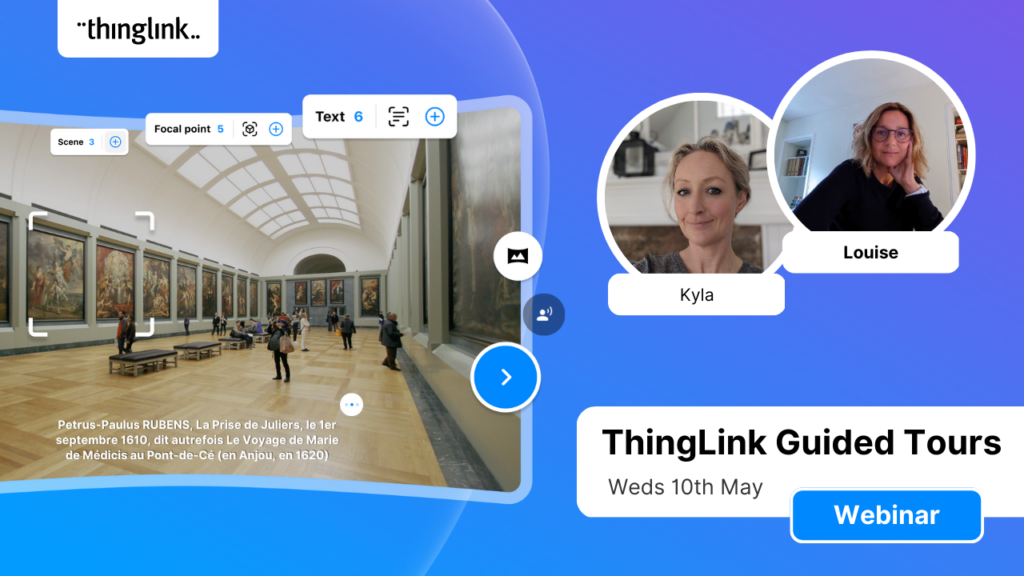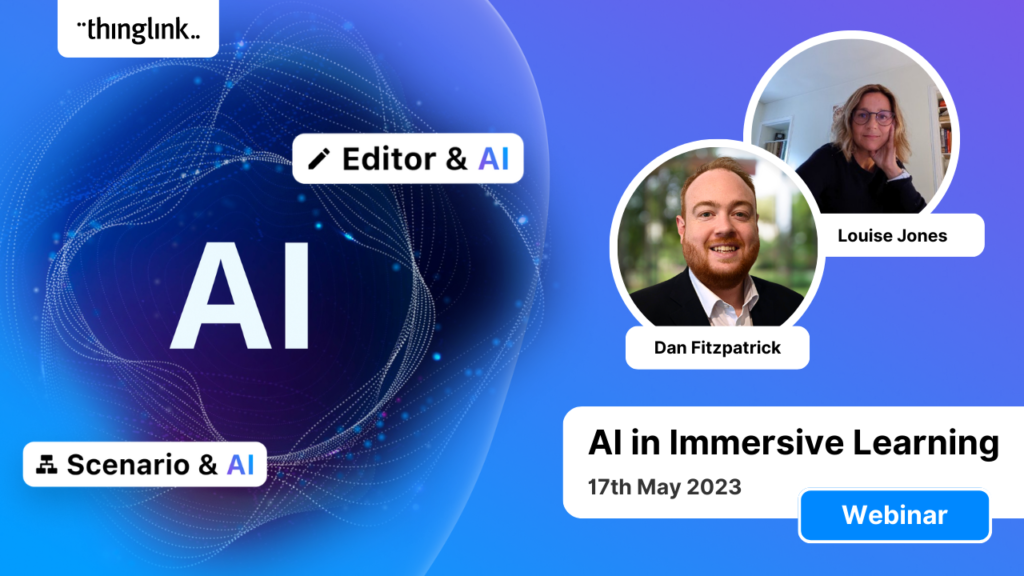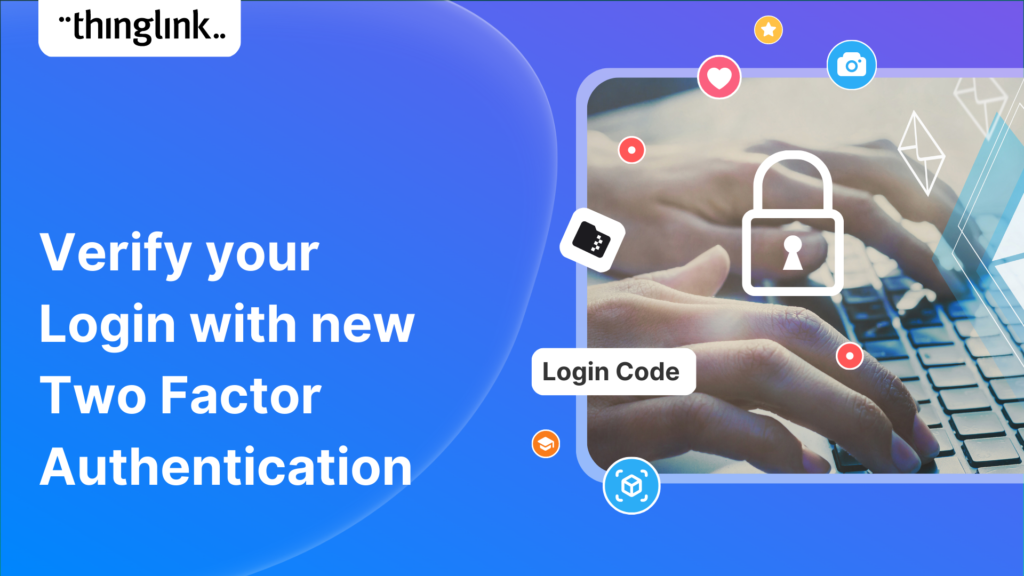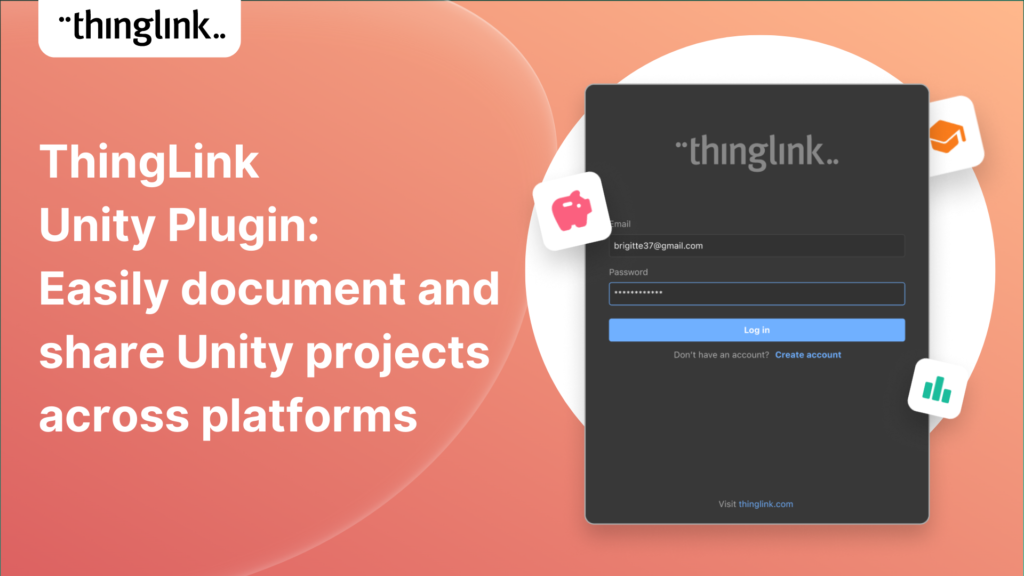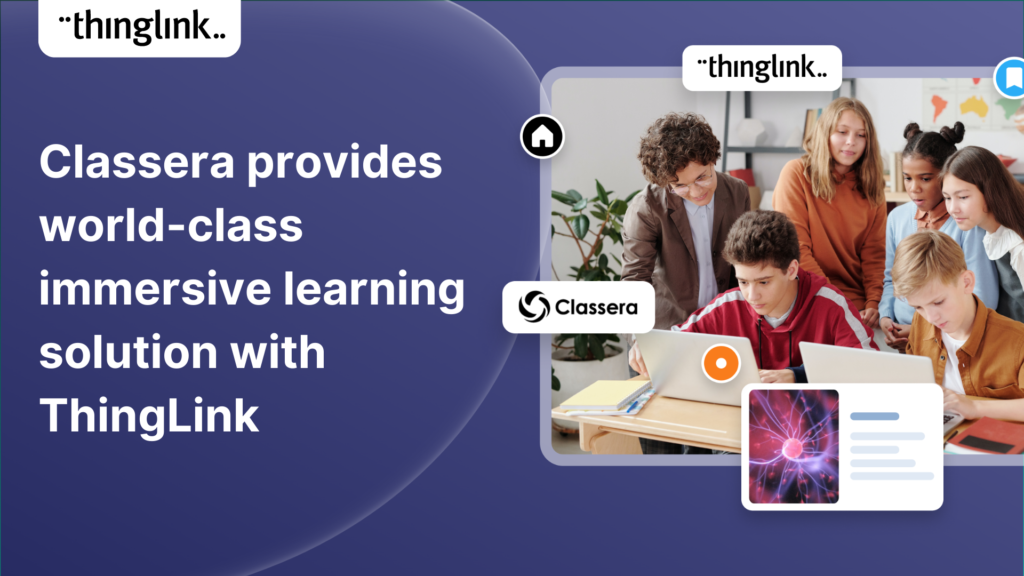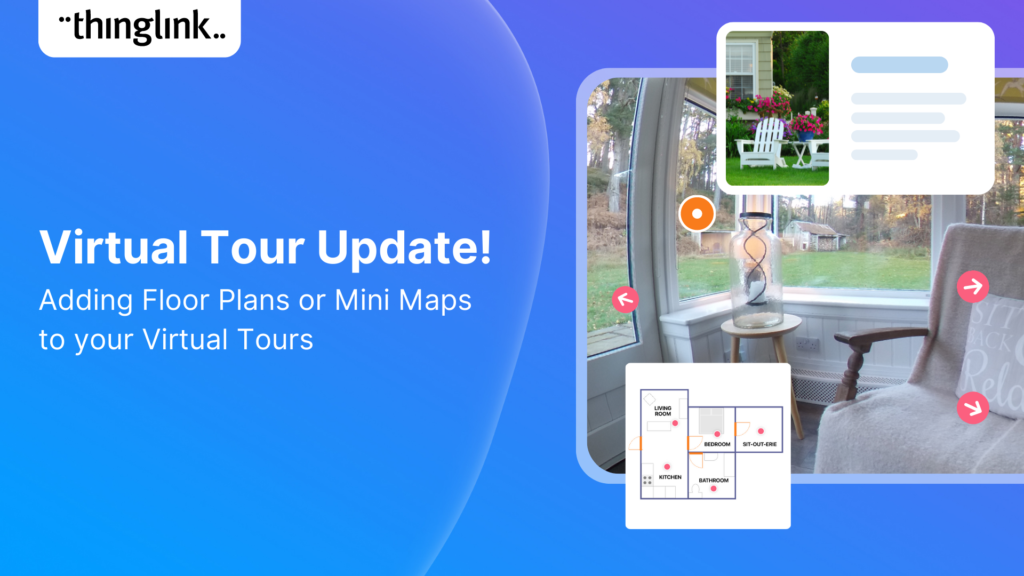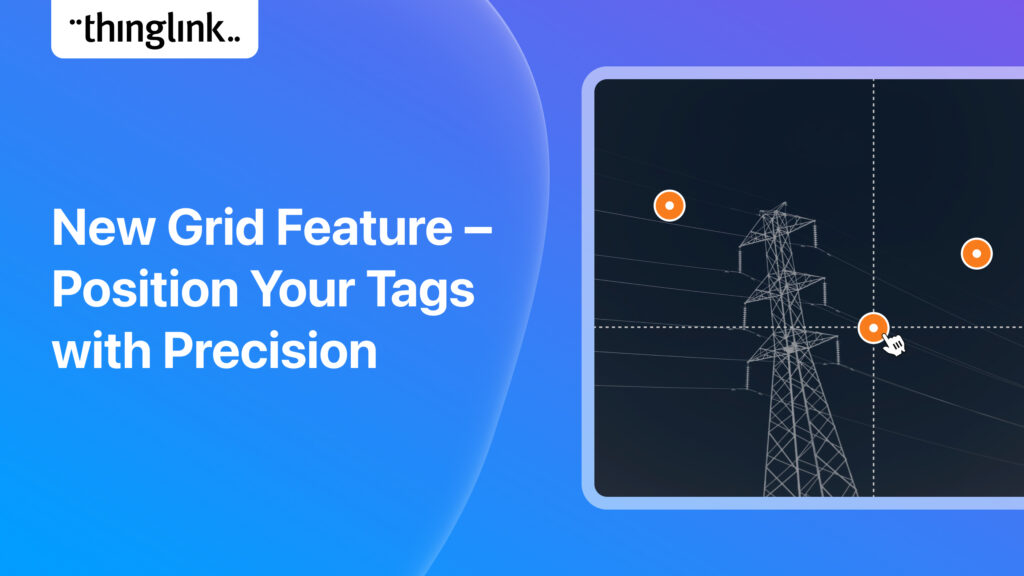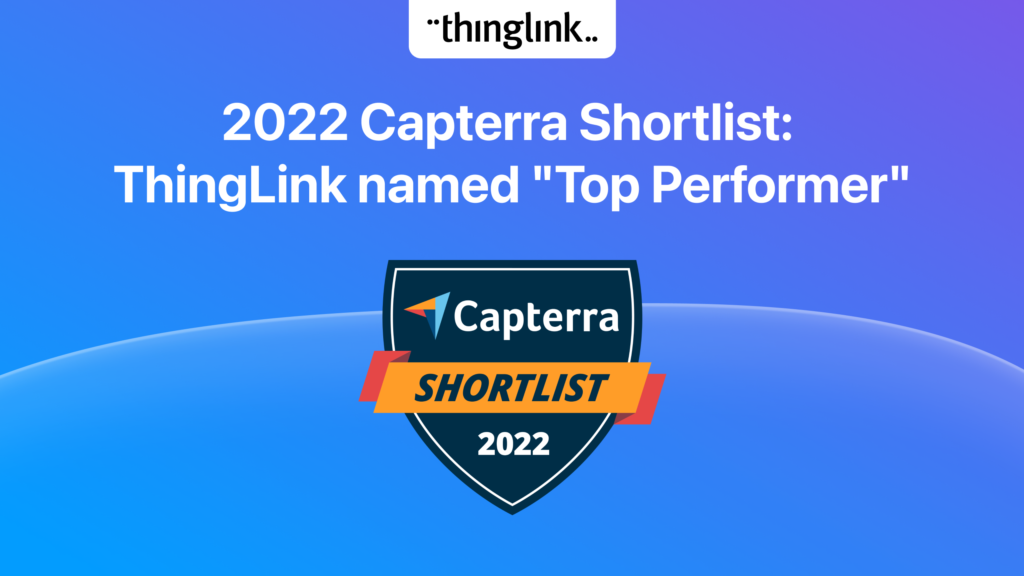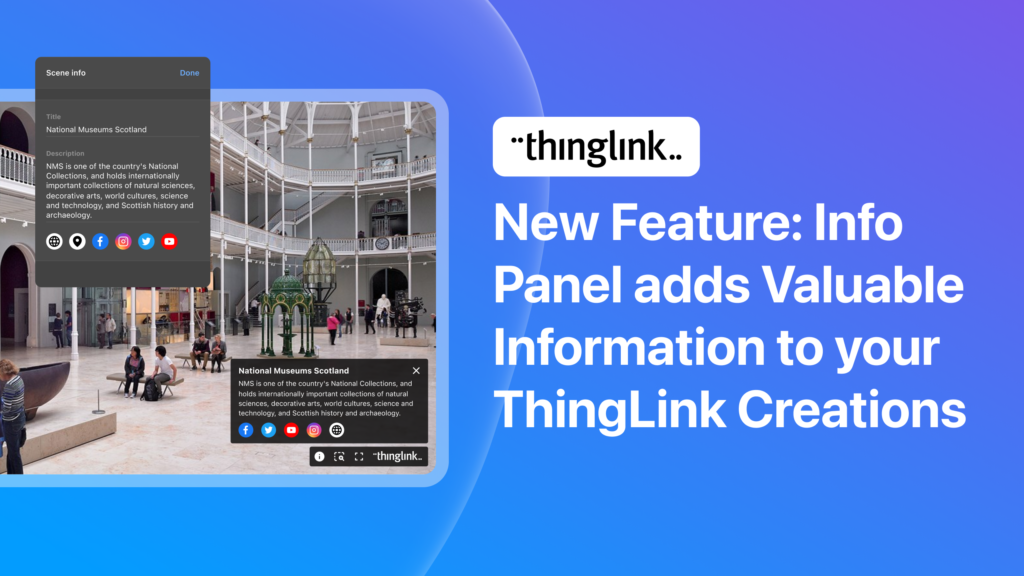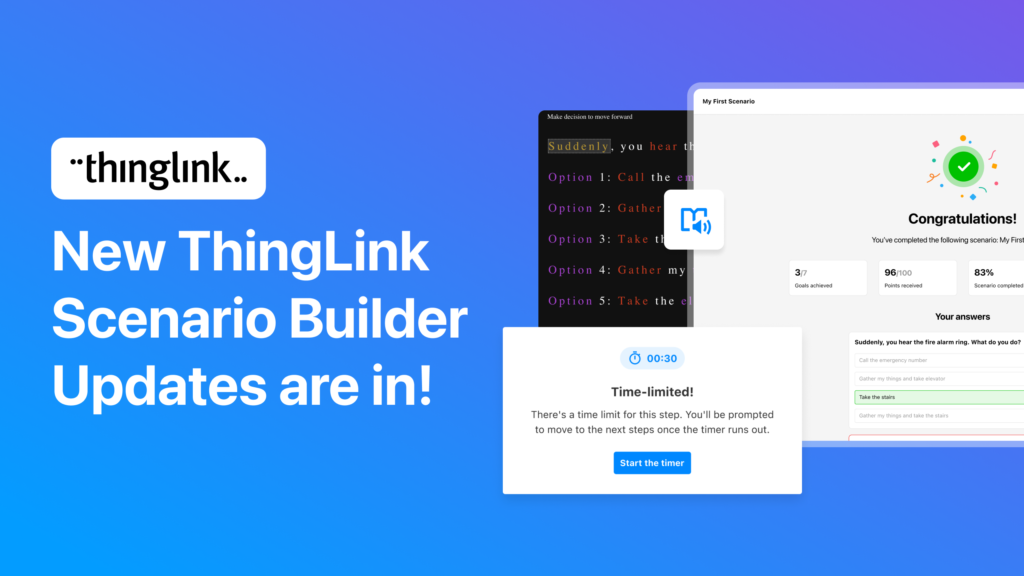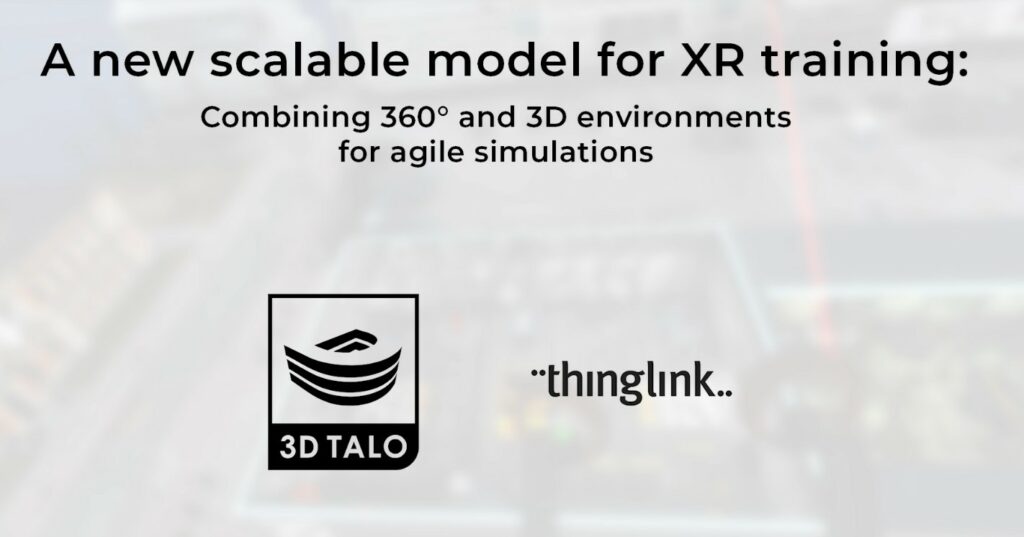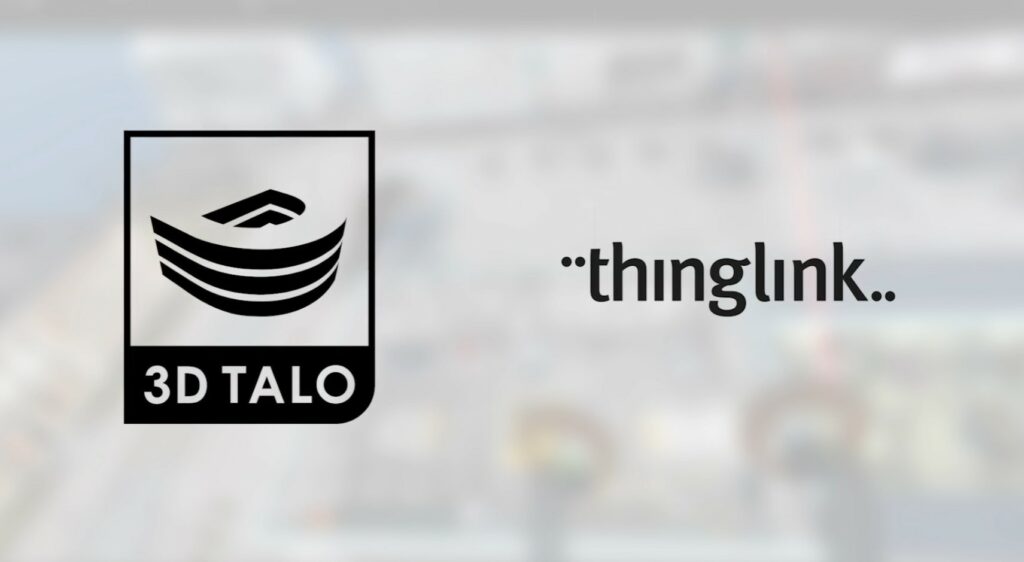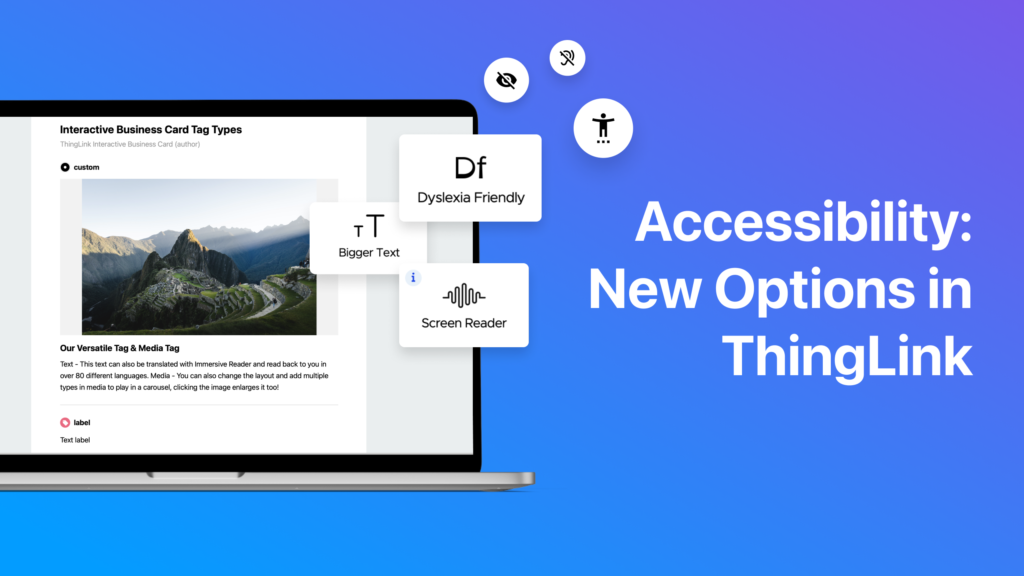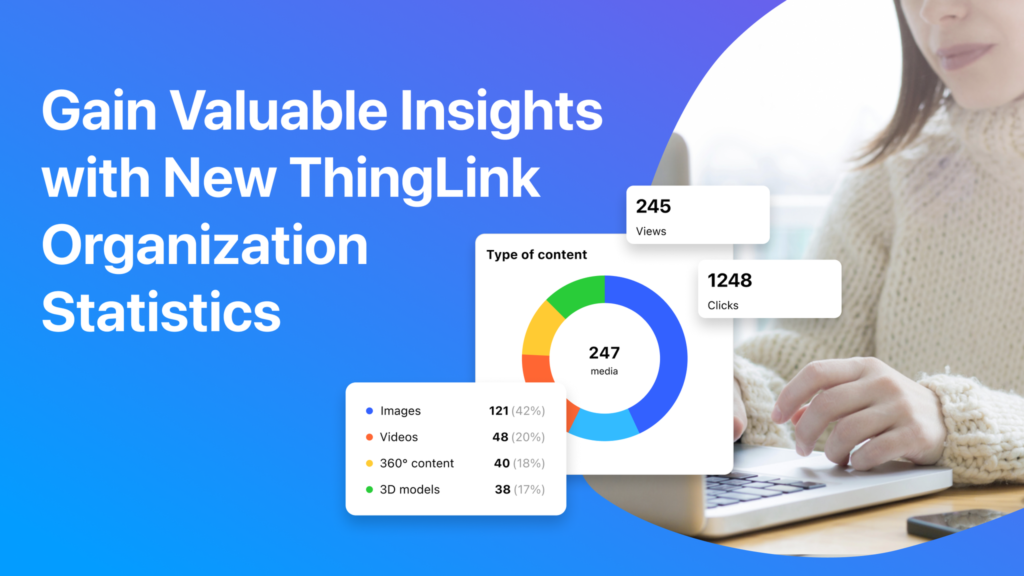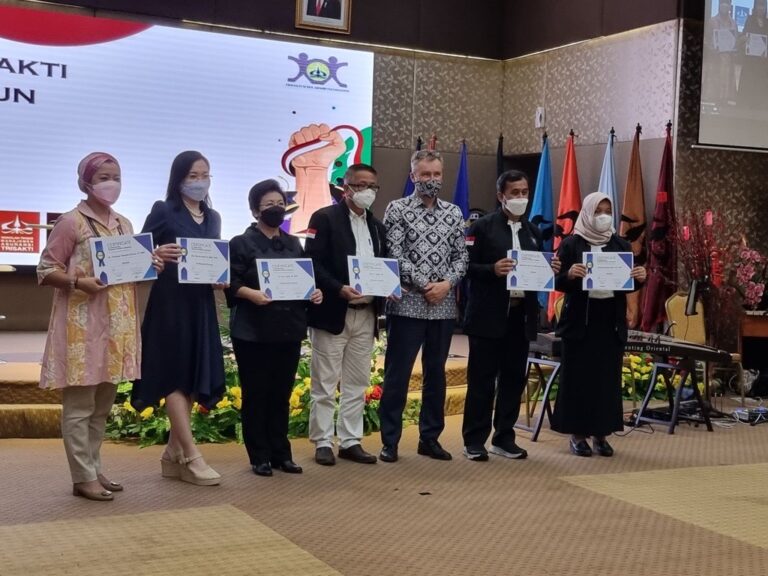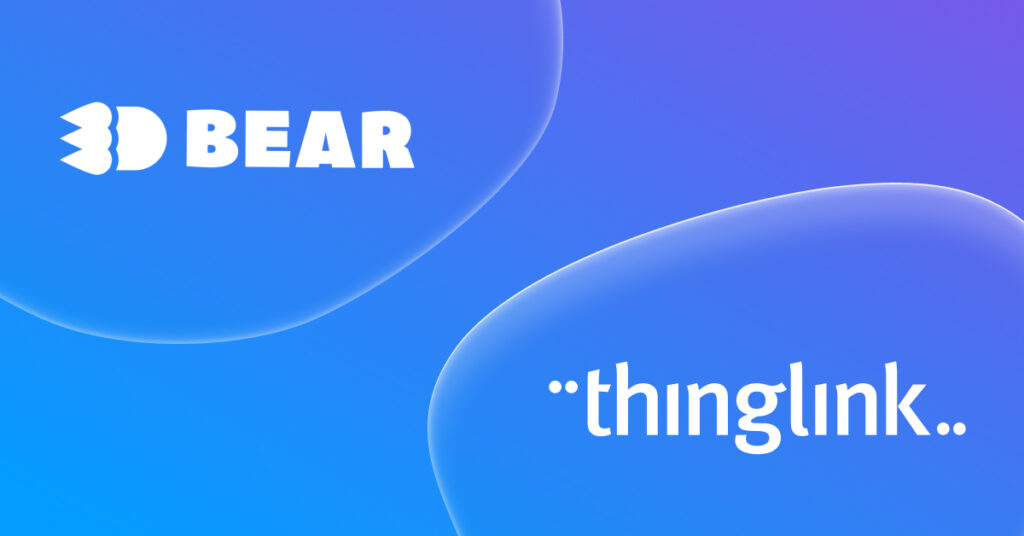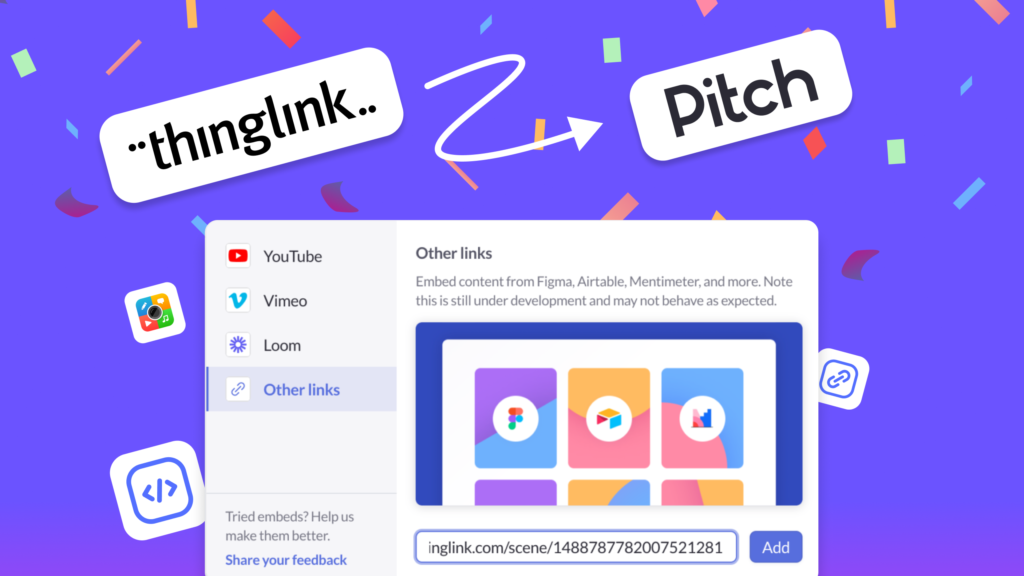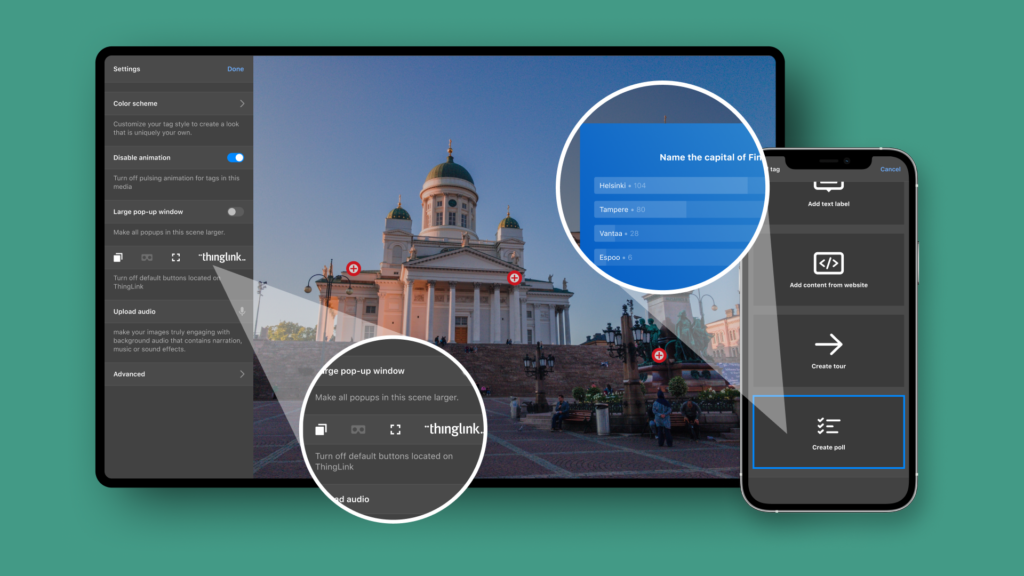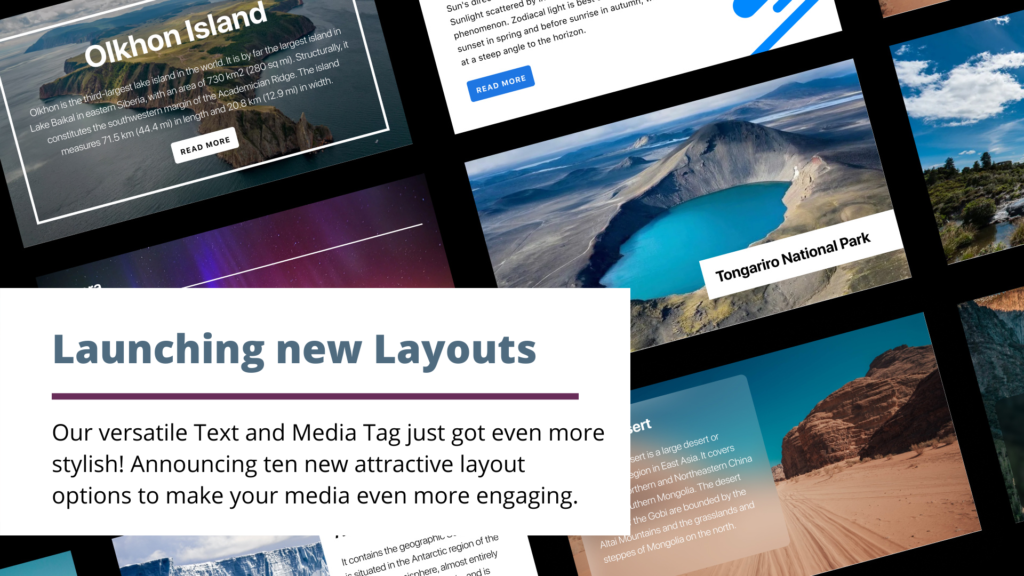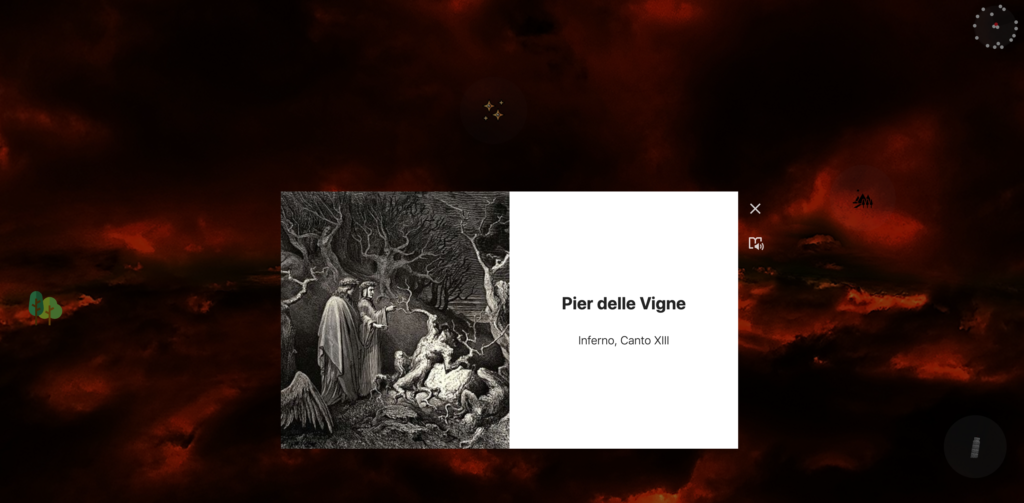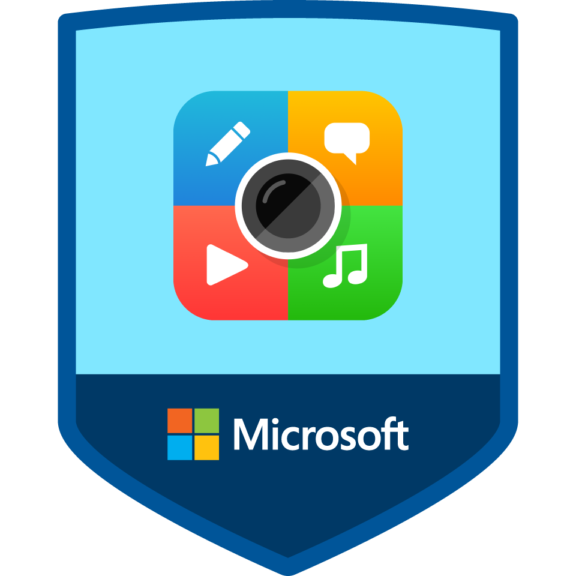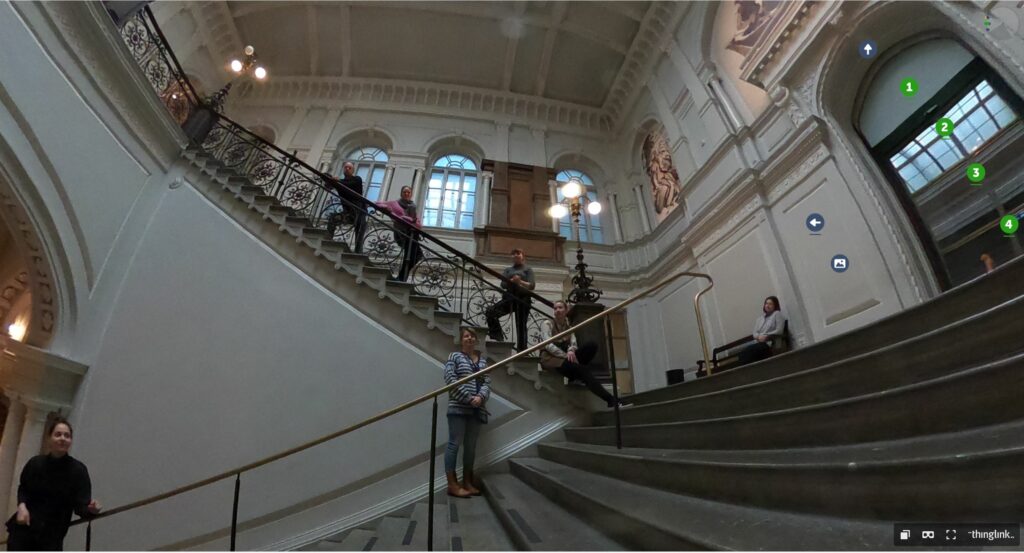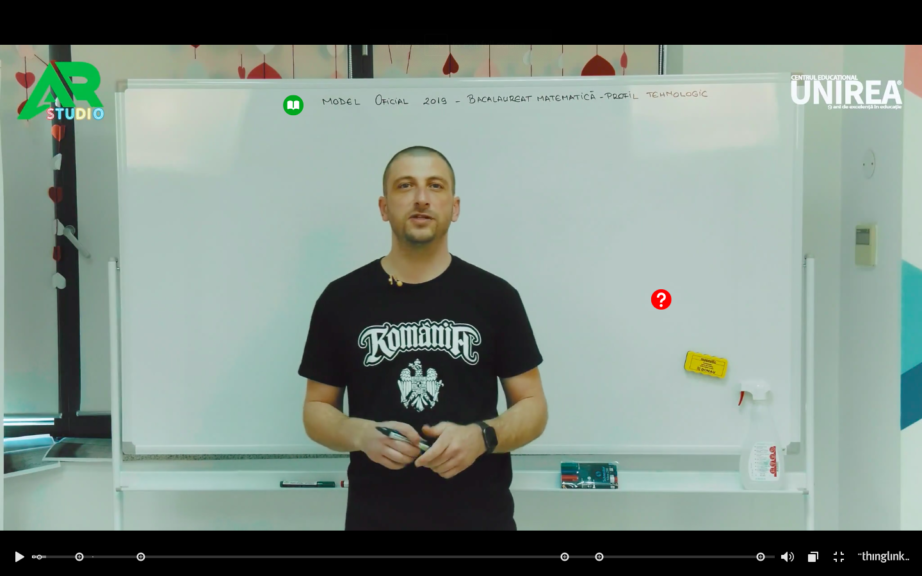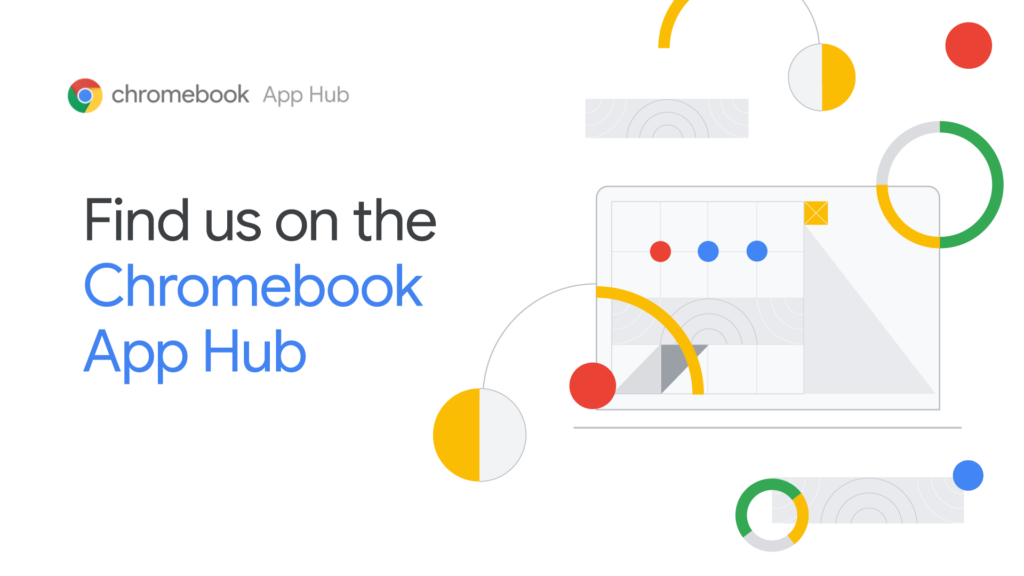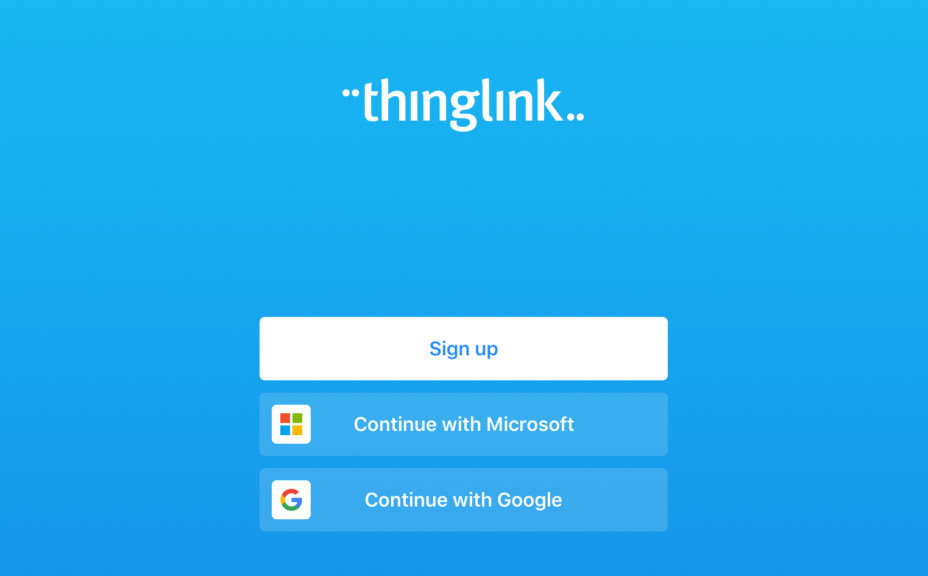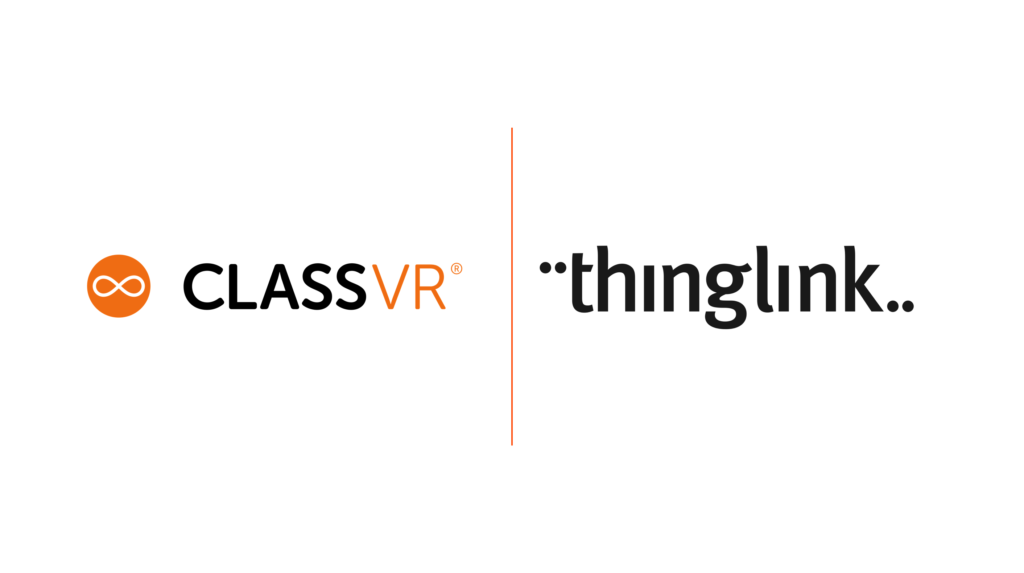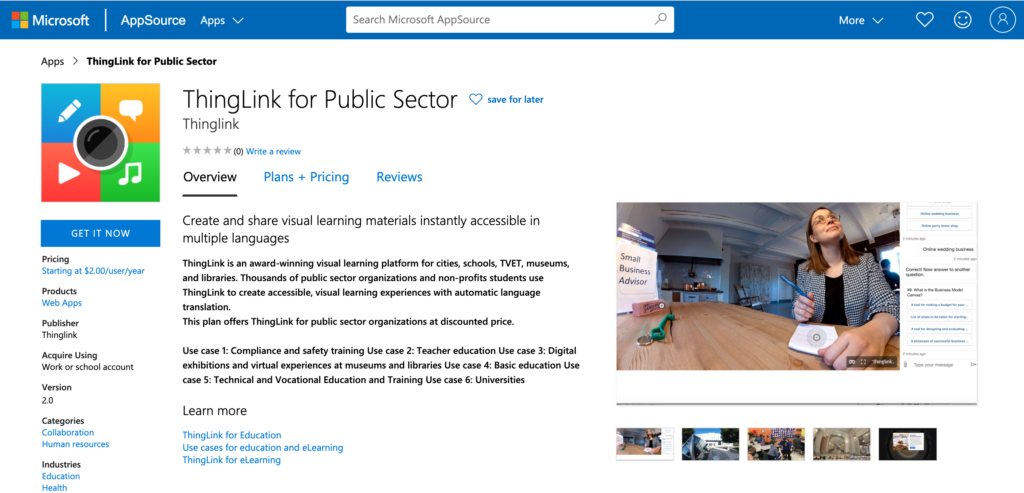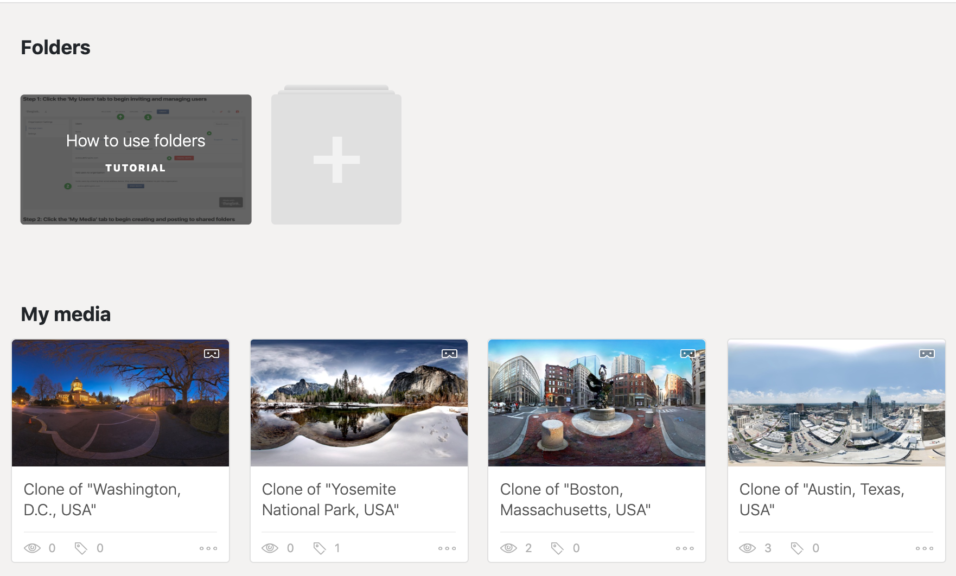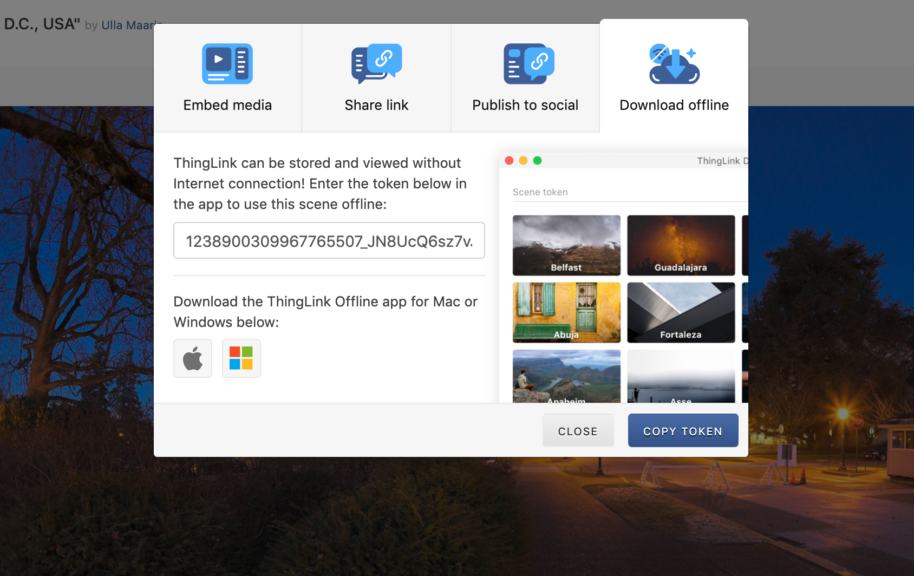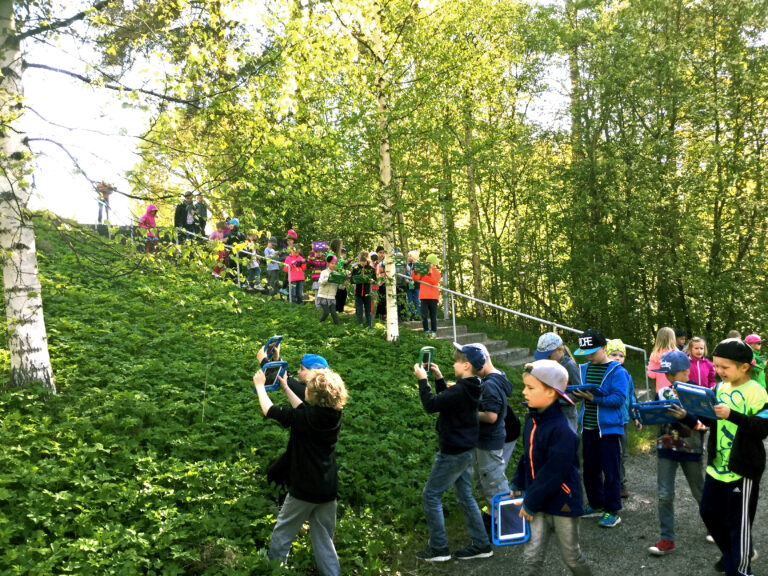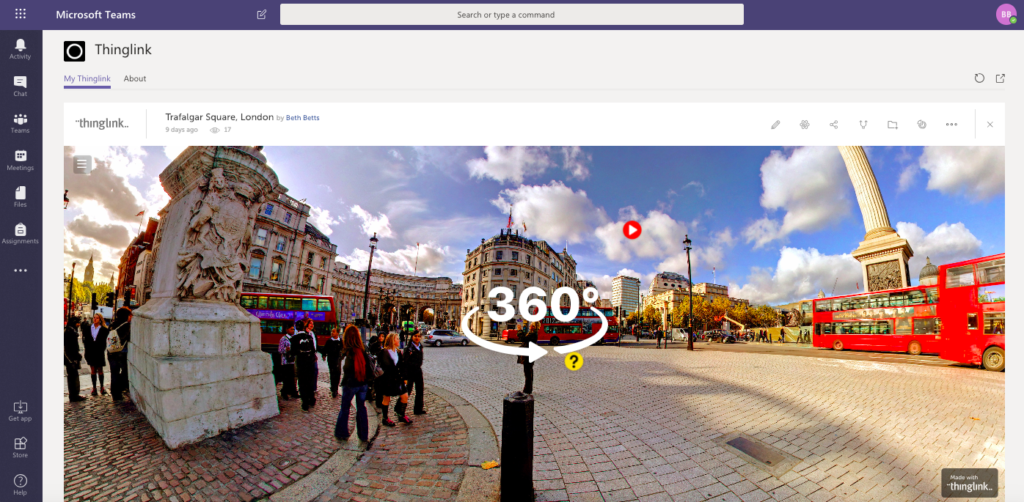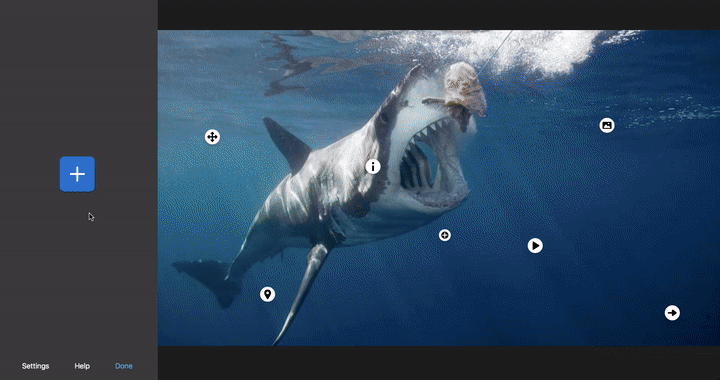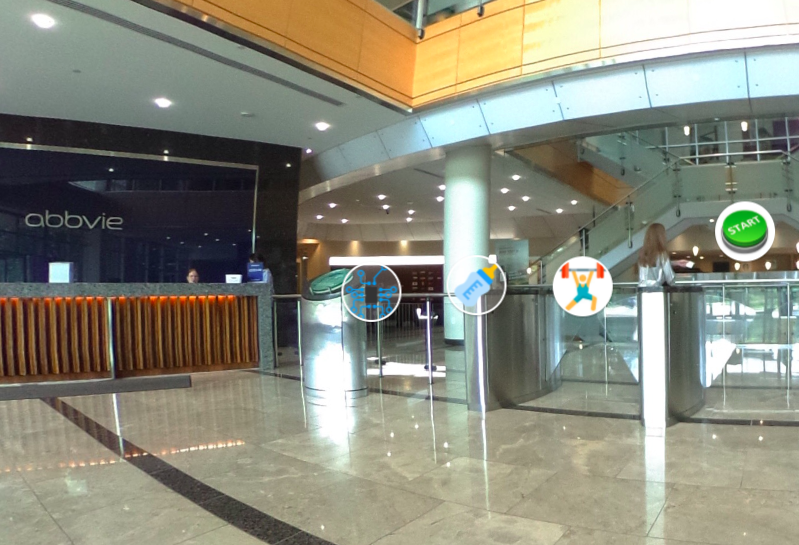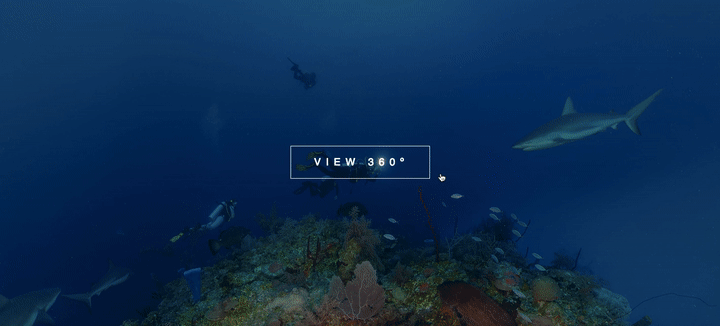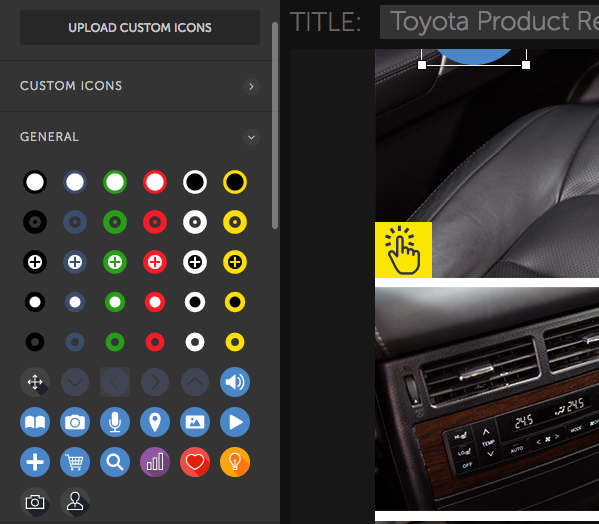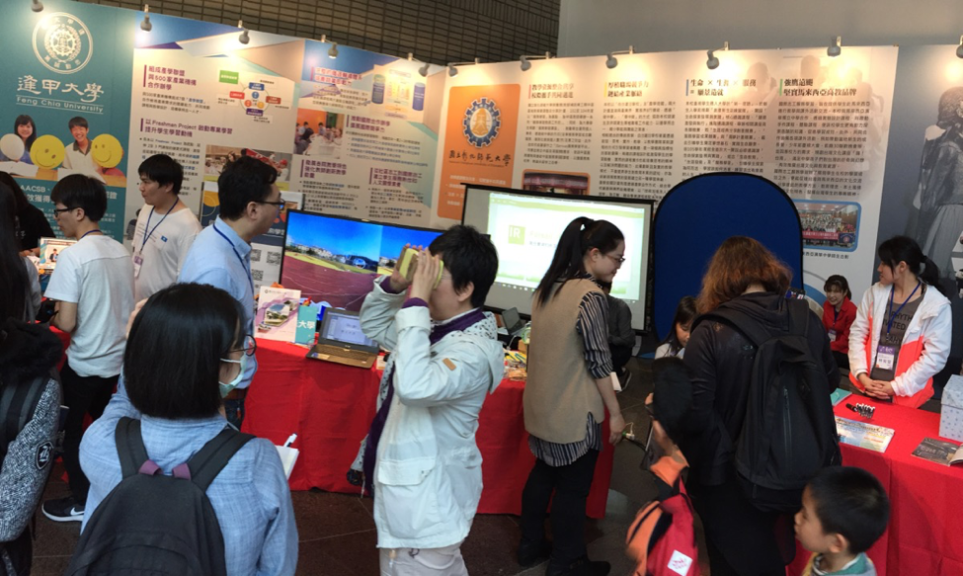We’re excited to invite you to our special webinar, unveiling the new ThingLink Certified Trainers Program. Louise from ThingLink and L. Michelle Salvant,...
The world faces numerous sustainability-related challenges, threatening the future of our planet. Those issues are often hard to grasp without direct exposure to...
💡 ThingLink Launches their AR Solution: Augmented Reality Simplified for All 📱 Breathe life into the ordinary with ThingLink’s brand new Augmented Reality...
Discover the new ThingLink Augmented Reality App! In this exclusive free webinar Louise from ThingLink is joined by Special Guests Patryk Wójtowicz, Savonia University...
In the fall of 2023, Ohio State University’s College of Arts and Sciences Office of Distance Education (ASC ODE) began a collaboration with the college’s...
 Kyla Ball
6 min read
Kyla Ball
6 min read
Creating an online course or module is now easier than ever using Scenario Builder templates In the world of elearning and corporate training, creating engaging...
 Kyla Ball
5 min read
Kyla Ball
5 min read
We recently launched ThingLink’s new Scenario Builder Templates – our latest tools to help you create impactful interactive training. In this blog we...
 Kyla Ball
5 min read
Kyla Ball
5 min read
ThingLink’s new Scenario Builder Templates are the newest arrival in our ever-growing set of assistant tools to help you build your own bespoke training and...
 Kyla Ball
5 min read
Kyla Ball
5 min read
ThingLink and Blockade Labs Skybox AI 360 Image Generation = Infinite Uses! We’re excited to extend an invitation to watch our special webinar that aims to...
Unleash imagination to design unique environments inspired by literature, mythology, historical periods, and more. With Skybox AI and ThingLink, you’re not...
ThingLink, an award-winning immersive learning technology platform is announcing a strategic partnership with Blockade Labs, creators of Skybox AI, an innovative...
We’re thrilled to announce the launch of our much-anticipated feature: the Icon Color Picker! This great new update comes as a direct response to the invaluable...
Dive into “Discover ThingLink: Your Step-by-Step Guide to Immersive Content Creation.” This webinar introduces ThingLink, a game-changing platform that...
At ThingLink, we believe that the creation and sharing of 360-degree photos should be possible for anyone, anywhere. In this blog we’re giving a tutorial ...
 Kyla Ball
3 min read
Kyla Ball
3 min read
Dive into a universe of detail with Pano to 360: no more multiple shots, just easy, fully immersive 360 photospheres! Since Google decided to retire the beloved...
Ever since Google discontinued its much-loved Street View Camera App, users around the world have been searching for a worthy alternative. The good news? Your search...
ThingLink introduces Pano to 360: a revolutionary and cost-effective solution for capturing 360 images – using an iPhone or android mobile device. Join our...
 Kyla Ball
2 min read
Kyla Ball
2 min read
Everyday applications of AI We are living in an era where artificial intelligence (AI) is becoming a seamless part of many aspects of our daily life. Whilst we ...
 Kyla Ball
4 min read
Kyla Ball
4 min read
Virtual tours are now one of the cornerstones of real estate marketing, giving potential buyers the opportunity to view a property at a convenient time and place...
 Kyla Ball
3 min read
Kyla Ball
3 min read
ThingLink Launches a Revolutionary Solution for Capturing 360 Images In light of the discontinuation of the Google Street View Camera app, ThingLink has answered...
 Kyla Ball
2 min read
Kyla Ball
2 min read
In response to the growing demand for a mobile-friendly solution to capture Photosphere images after the discontinuation of the Google Street View Camera app, ThingLink...
ThingLink has been a leader in learning technologies, consistently seeking innovative ways to stay ahead of the curve. Not only are we bringing you new ways to ...
Earlier this year, our team initiated a series of webinars, fostering a dialogue with creators on the integration of Artificial Intelligence (AI) tools into their...
Unlimited seats on this plan mean that everyone in your school or organization can have access to our much-loved multimedia editor and ThingLink Scenario Builder...
This webinar was live on the 14th June! ThingLink has been a leader in learning technologies, consistently seeking innovative ways to stay ahead of the curve. When...
Today, ThingLink announces a new product: Guided Tours. Here is a quick summary of what it is, why we built it, and how it can help instructors and learners to ...
The action replay is now available! Have you ever wondered how to offer more structure in your virtual tours, trips or experiences? We are delighted to say that...
ThingLink has been a leader in learning technologies, consistently seeking innovative ways to stay ahead of the curve. When it comes to AI, we wish to take a more...
Have you ever wondered how to offer more structure in your virtual tours, trips or experiences? We are delighted to say that ThingLink is announcing the perfect...
Mitigate Risk with Two Factor Authentication ThingLink has released a new feature enabling ‘Login Verification’ for your individual account and also as a setting...
We hope you are settling in to the new year! Now that we’ve had a chance to catch up from the holidays we’ve looked back at 2022 with a lens on our metrics. ...
This week we have especially great news FOR YOU, our wonderful community and our team. In this special round-up we bring news of our stand-out achievements this...
The ThingLink Unity Plugin makes it easy for developers to annotate and share their Unity projects on any platform or device with just a couple of clicks. Thousands...
If you are a developer working on a Unity project, at some point you most likely want to share it with another user for feedback. If the other user has the same...
ThingLink and global learning super platform Classera are today announcing they have developed a technical integration to offer educators a simple solution for ...
Increase the effectiveness of your online training with multimedia interactive simulations and virtual tours. eLearning course content creation is easy with ThingLink!...
Your viewers won’t get lost with this brilliant new virtual tour feature! Our latest ThingLink update enables you to add a floor plan or ‘mini map’ that shows...
ThingLink has come a very long way since it was launched in 2011! The experience, features and functionality have enabled millions of creators to publish...
It’s now even easier to create slick and professional-looking interactive content with another of ThingLink’s handy new content tools. The Grid Feature allows...
ThingLink has been placed in an impressive three separate categories by Capterra, the free online service that helps organizations choose the right software. In...
There’s a reason ThingLink is rated the best virtual tour software! And, we just keep getting better and better! A new feature is available now for all our ThingLink...
Summer ThingLink Scenario Builder Updates The ThingLink Scenario Builder improves with your feedback and we are delighted to announce a few more ‘you said –...
With over 20 years of visionary experience between them, ThingLink and Igloo Vision have crafted a reality for the future of immersive spaces. ThingLink is the ...
Adding time pressure to create realistic scenario based learning and two other great features We’ve just added three key updates to the ThingLink Scenario builder....
 Kyla Ball
3 min read
Kyla Ball
3 min read
ThingLink and 3D Talo announced a strategic partnership and a new model for building agile XR simulations for learning and development. As a result of the...
 Matias
2 min read
Matias
2 min read
Interaktiivinen kuva-alusta ThingLink ja teollisuuden virtuaalitodellisuus-ratkaisuihin erikoistunut 3D Talo julkistivat strategisen kumppanuuden, jonka kautta ...
 Matias
2 min read
Matias
2 min read
Want to create immersive and awe-inspiring content for your audiences but not sure where to start? We have the perfect course for you – ThingLink Certified...
Web View Now Available! From today, ThingLink has a new additional ‘Web View’ function available for enhanced usability. This offers your viewers more...
We know that understanding how to create engaging content for learning or marketing is critically important to you and your organization. For this reason ThingLink...
Press release Jakarta 21.01.2022 The Finnish immersive learning technology company ThingLink and the Trisakti Scholarship Foundation announce collaboration to support...
 Matias
2 min read
Matias
2 min read
ThingLink, a leading interactive media solution for immersive learning and development, announces a new integration with the web version of Microsoft PowerPoint....
ThingLink and Instructure are delighted to announce that they are working together to offer educators easily managed and accessible, interactive learning experiences....
 Kyla Ball
2 min read
Kyla Ball
2 min read
We’re excited to share 3D Bear has joined ThingLink’s Certified Partner program. 3D Bear, the provider of immersive classroom technologies and professional ...
 Matias
1 min read
Matias
1 min read
Point Your Viewers In The Right Direction! We’ve heard from some of our fans in our ThingLink communities that sometimes the icon for a tag can obscure important...
 Kyla Ball
1 min read
Kyla Ball
1 min read
Pitch, the popular collaborative presentation platform for teams, now supports ThingLink interactive media in their presentations. The support for ThingLink embeds,...
First of all, thank you again to our incredibly active community for all the helpful feedback and requests over the past months! Our development team has been ...
 Kyla Ball
3 min read
Kyla Ball
3 min read
The purpose of the partnership is to find new interactive solutions for student-centered and project-based learning, developing teachers’ and students’ essential...
 Matias
2 min read
Matias
2 min read
Our versatile Text and Media Tag just got even more stylish! We are delighted to share our newest development: ten new attractive layout options. Our Text ...
The interactive media platform ThingLink now supports 3D model annotation. In addition to images and videos, ThingLink content creators can now also enhance 3D ...
 Kyla Ball
1 min read
Kyla Ball
1 min read
ThingLink keeps getting better every month, and over the last 20 months, our product team has released an impressive number of new features and upgrades –...
 Kyla Ball
1 min read
Kyla Ball
1 min read
ThingLink is today announcing an integration with the popular course creation platform Thinkific. For ThingLink, this partnership is a strategic expansion towards...
 Kyla Ball
1 min read
Kyla Ball
1 min read
ThingLink includes an integration with image library Unsplash to give you instant easy access to over a million searchable, free images. We know that it can sometimes...
 Kyla Ball
2 min read
Kyla Ball
2 min read
This short post explains step by step how to share your tours for VR headsets quickly and easily, getting your learners immersed in the action straight away! One...
 Kyla Ball
3 min read
Kyla Ball
3 min read
ThingLink’s Finnish team continues to grow as Henri Pennanen joins the team to lead new content production initiatives for education and workforce development....
The creation of successful online learning experiences relies on systematic planning and pedagogic expertise. To support our business and academic customers better...
The year 2020 has accelerated the adoption of new solutions for online learning and publishing at an unprecedented pace. At ThingLink, the increased demand shows...
 Kyla Ball
1 min read
Kyla Ball
1 min read
The Finnish education and media technology company ThingLink and the educational transformational company Mahattattva in India are today announcing a partnership...
ThingLink education and business subscriptions are now available in Italy via MR Digital by Monti & Russo. MR Digital, a systems integrator originating from...
To help educators overcome some of the practical challenges related to blended learning environments, ThingLink launches a new course in the Microsoft Education...
On May 27, 2020, ThingLink has updated its Terms of Service, Privacy policy and other legal documents regulating your use of ThingLink. You can always find the ...
ThingLink and the University of Helsinki have agreed on a partnership that brings rich media images, interactive video lessons and virtual tours to the largest ...
ThingLink has partnered with PowerUpEDU, an award-winning education technology solutions provider for classrooms in the southeast. Through this partnership all...
ThingLink, an award-winning Finnish education technology company, announced today that they have joined the Google for Education Integrated Solutions Initiative....
ThingLink and AR Studio announce a partnership to help teachers in Romania create curriculum-aligned resources for online learning. AR Studio, an educational ...
We are happy to share that ThingLink editor is now available in Spanish, French, Arabic and Russian. This update will make ThingLink more accessible to millions...
 Kyla Ball
1 min read
Kyla Ball
1 min read
We at ThingLink pride ourselves on working with several major education technology providers, and through our partnerships we aim to make ThingLink a valuable learning...
ThingLink and Tablet Academy announce Professional Development Partnership ThingLink and Tablet Academy are delighted to announce their partnership which will be...
An updated version of ThingLink’s iOS app automatically adds a new individual user to their ThingLink organization using G Suite or Microsoft Azure ID. For...
PRESS RELEASE Two award winning European education and media technology companies, ThingLink and ClassVR announce a strategic partnership to support VR creation...
ThingLink eLearning and education licenses have this week become available via Azure Marketplace, Azure Portal, and AppSource. This means Microsoft Cloud Solution...
Classroom, school, and eLearning accounts can now access shared folders and collaborative editing on ThingLink. This means multiple users can simultaneously edit...
There are several major product updates that we wanted to bring to our EDU users for some time. Among these are courses and shared folders with collaborative...
In September we asked our users about offline viewing, and in less than a week we got over 200 replies. Over 80% of all the respondents said they need offline viewing...
In 2012, ThingLink was the first media platform to bring interactive image sharing to Twitter. The feature was hugely popular especially among customers who use...
At BETT London 2019 we set ourselves an ambitious roadmap that included several product updates aiming at one goal: Making it easier for educators in small and ...
Most ThingLink images and videos include short text descriptions that give context to the visual experience and help the viewer understand what they are looking...
The new editor keeps getting better! In the past weeks we have been working on several feature updates, and you can find them within this post. If there are any...
360-degree images and videos can help learners develop understanding of real-world environments outside their physical learning space, but trying to successfully...
ThingLink has been selected as one of the two winners of the 2018 UNESCO King Hamad Bin Isa-Al Khalifa Prize for the use of ICT in Education. The Prize awards ...
We are happy to announce that users of Microsoft Office 365 software will now be able to create and view interactive images, videos and 360-degree virtual tours...
Our new interactive editor offers a wide range of enhanced features and much more flexibility than the previous editor. Note that if you change to the new editor...
The partnership focuses on solutions that help patients, elders and students with learning disabilities navigate everyday challenges at home, school, or residential...
This new feature gives Premium business users the ability to invite colleagues to view and create ThingLink content for easy team collaboration. Each admin user...
I was recently reading about the transitioning landscape for corporate learning. Experts in the area are not holding back their views about the need for change....
Since we released ThingLink 360 last year, our team has gathered tons of feedback and feature requests from many user groups. This batch of enhancements includes...
Having a smooth and responsive mobile experience is critical for today’s consumer. With this need in mind, our team just released over 300 mobile responsive...
EdTechXEurope, the largest education technology summit in Europe, announced the winners of its EdTechXGlobal startup awards at the fifth edition of its event ...
Did you know that there are over 6,500,000 images, videos, and 360s on ThingLink? Not only is ThingLink the place to create interactive masterpieces, it’s...
ThingLink is excited to announce that it has appointed its former CTO Janne Jalkanen to lead ThingLink’s new data team in the role of Head of Machine Learning....
We’re excited to announce our latest partnership with HungLun Technology to bring ThingLink’s state-of-the-art platform to students and businesses in China ...


